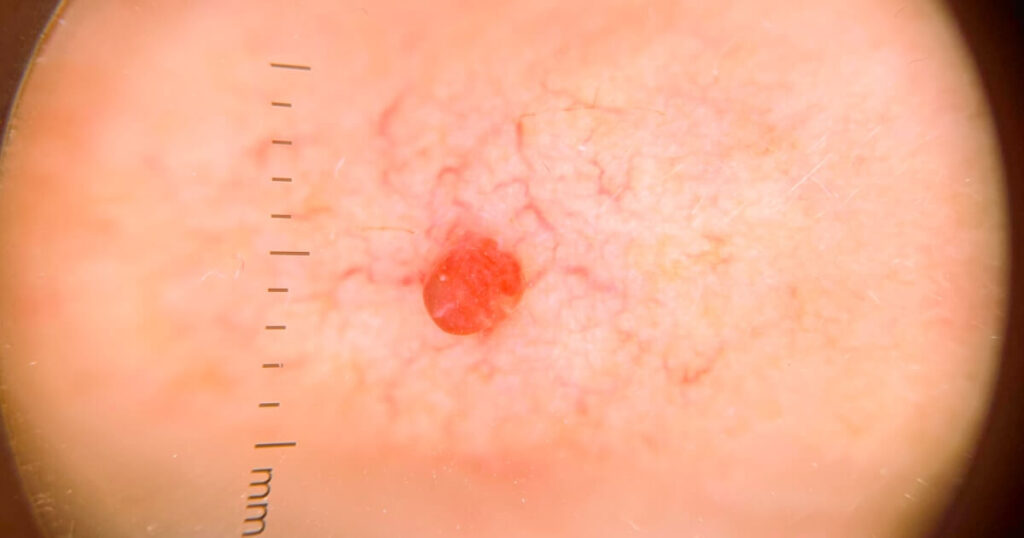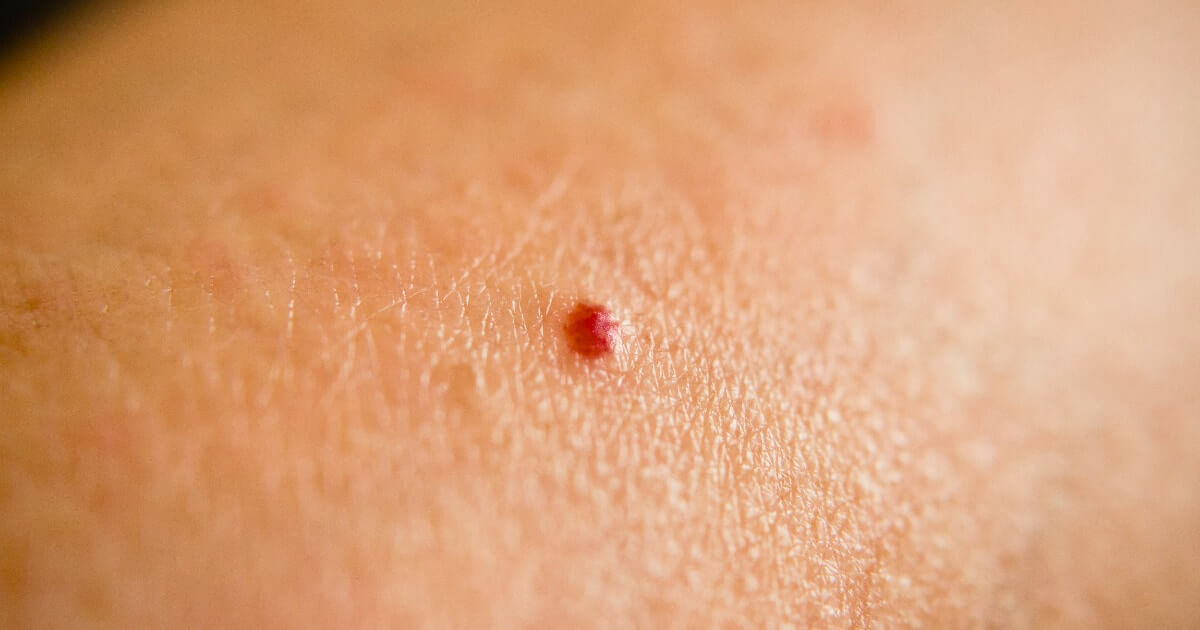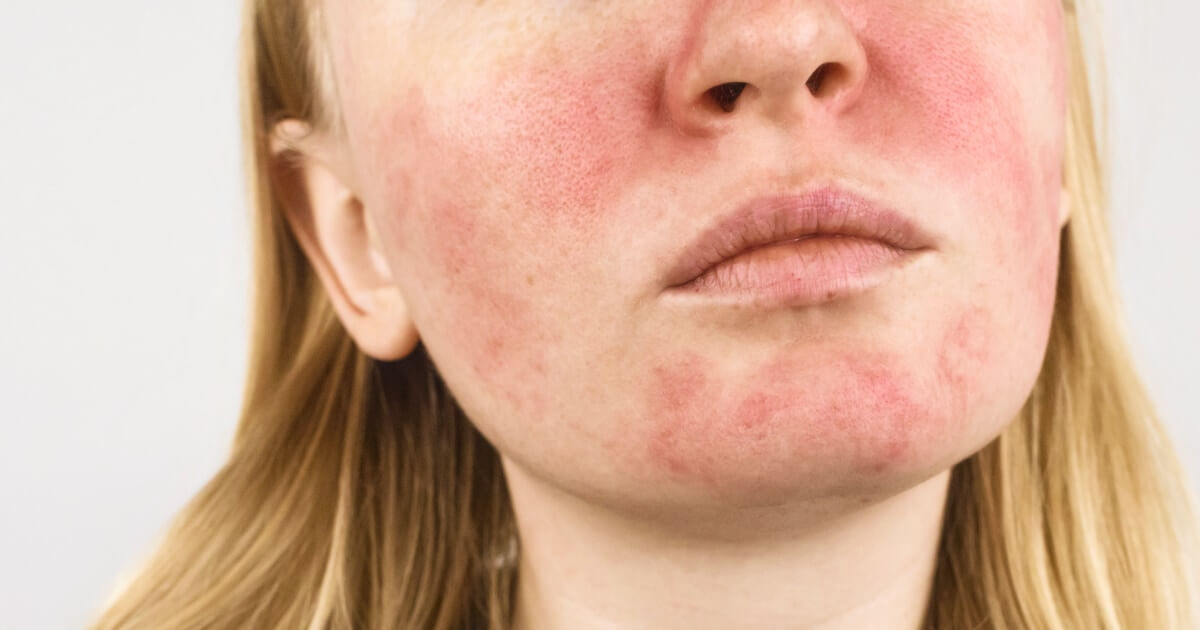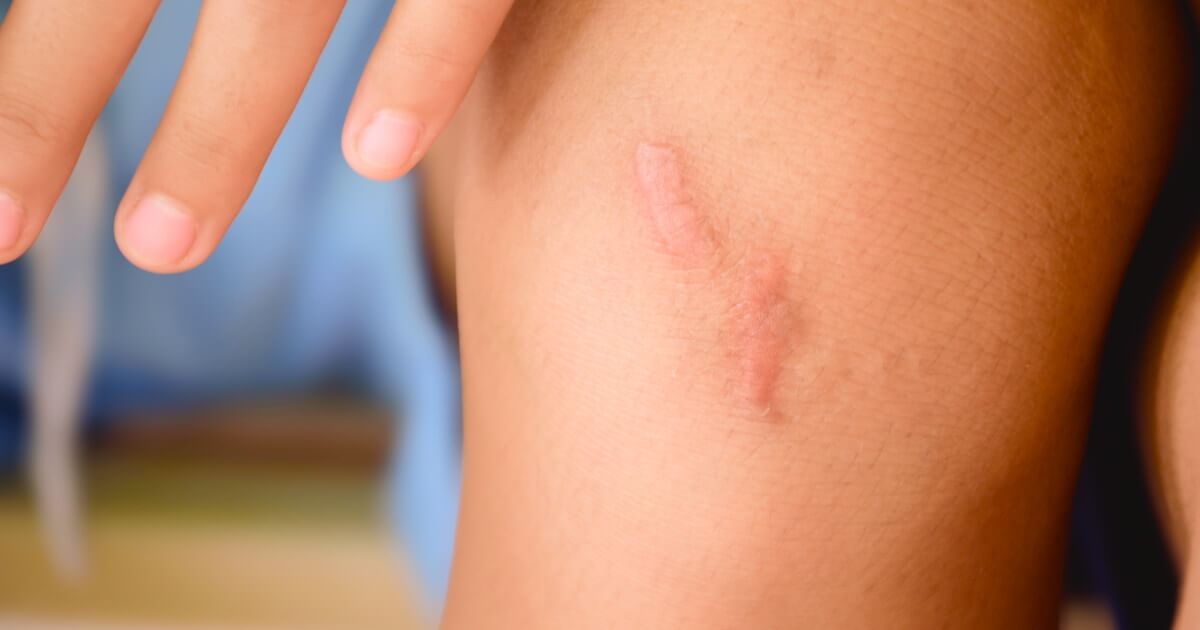Have you ever noticed a small red spot or a bump on your skin that seems to have appeared out of nowhere? It could be a angioma, a benign vascular lesion that, although harmless, often generates doubts and concerns especially when they decide to bloom in visible areas such as the face.
From the García-Legaz Dermatological Institute We want to help you understand What is an angioma?, how to identify them, the different ones guys, its possible complications and the innovative options of treatment that modern dermatology offers.
What is an angioma?
An angioma is a benign proliferation of blood vessels which appears as a spot or bump on the skin or other areas of the body. It forms when blood vessels, such as capillaries, veins, or arteries, They grow abnormally and clump together, giving rise to these lesions with a reddish, purplish or bluish appearance.
“There are different types of angiomas, which can vary in size, shape and depth, from small flat spots to larger bumps.”
Complications of angiomas
Most angiomas are harmless and do not require treatment, although in some cases they may be treated for cosmetic reasons or if they cause discomfort, as:
- Ulceration and infection: Occasionally, angiomas can develop wounds or ulcers on its surface, which can lead to infections and cause pain, inflammation and discomfort.
- Aesthetic impact: when angiomas appear in visible body areas, such as on the face, hands or arms, can be a source of aesthetic concern and affect self-esteem.
- Discomfort according to location: the location of angiomas can influence the inconveniences that they generate. For example, if they appear on the eyelids, they can affect vision, while near the joints they can limit certain movements.
How to identify an angioma?
It's important to know what an angioma is so you can recognize it and treat it if necessary. Here are some points. keys to identify them:
- Color: They are usually bright red, burgundy or bluish in color.
- Size: They vary from small dots to several centimeters in diameter.
- Shape: They can be flat or raised, round or irregular.
- Location: They can appear anywhere on the body, although they are more common on the trunk and extremities.
- Texture: Most are soft to the touch.
Signs to watch for
Although angiomas are not usually dangerous, it is important to be aware of them. attentive to any change in size, shape, or color, as these may indicate the need for a dermatological evaluation to rule out more serious problems.
Some signs are:
- Growth rapid or sudden change in size.
- Bleeding frequent or difficult to stop.
- Pain or tenderness in the affected area.
- Changes in the coloration or texture of the surrounding skin.
Most common types of angiomas
Each type of angioma has a behavior and a different prognosis.
The decision to treat them depends on your evolution, symptoms and yours personal preferencesTherefore, if you have any concerns, it's essential to undergo a dermatological evaluation to classify them and determine the best approach.
Capillary angioma or cherry
Capillary angiomas, also known as cherry angiomas, usually appear as flat or slightly raised, brown spots. bright red to purple.
These can appear anywhere on the body, although they are most frequent in:
- Face.
- Neck.
- Trunk.
His size varies from small spots to more extensive lesions, generally in the form of rounded, and can be presented individually or in groups.
Telangiectasias or spider veins
Spider veins or telangiectasias It gets its name from its appearance, which resembles a spider: a central red dot from which fine blood vessels radiate.
They are common on the face, neck, and upper torso, and can appear at any age. However, they are more common in women. pregnant women and people with liver disorders.

Possible treatments for angiomas
There are several options for the removal of angiomas, whether for aesthetic reasons or to relieve discomfort. The choice of treatment should be made by a dermatologist and will depend on factors such as the size, location and type of angioma.
Below, we present some of the treatments more employees by dermatologists.
Dermatological laser
Laser is one of the methods more advanced and precise to treat angiomas, especially suitable for visible areas thanks to its high precision, which minimizes the risk of scarring.
“The dermatological laser uses light to heat and destroy selectively target abnormal blood vessels without damaging the surrounding skin.”
At the García-Legaz Dermatological Institute, we use Ellipse SWT (IPL) and Nd:YAG laser of the versatile Nordlys platform, a cutting-edge medical device that prioritizes, above all, the health and well-being of your skin.
Sclerotherapy
This treatment involves the injection of a sclerosing solution directly into the angioma. The solution irritates the lining of the blood vessels, causing them to collapse and its subsequent reabsorption by the body.
Sclerotherapy is especially useful for treating Large and deep angiomas, especially in larger lesions on the legs.
In summary, to treat an angioma effectively, it is essential to identify its typology and trust in professionals in clinical dermatologyThey will correctly diagnose the type of angioma you have and will guide you on the best treatment options, always ensuring that the procedure is sure and adapts to your specific needs.
Literature
- Landolfi, EJ (2012). Cutaneous hemangiomas and benign vascular lesions: treatment with laser and intense pulsed light (Doctoral dissertation, National University of La Plata). https://sedici.unlp.edu.ar
- Vela, J.C. (1972). Cutaneous angiomas. Annals of Medicine, 58(3), 75-77. https://dialnet.unirioja.es
- Pastor-Tomás, N., Bañuls, J., & Nagore, E. (2023). Clinical relevance of cherry angiomas. Dermo-Sifiliographic Acts, 114(3), 240-246. https://www.sciencedirect.com




